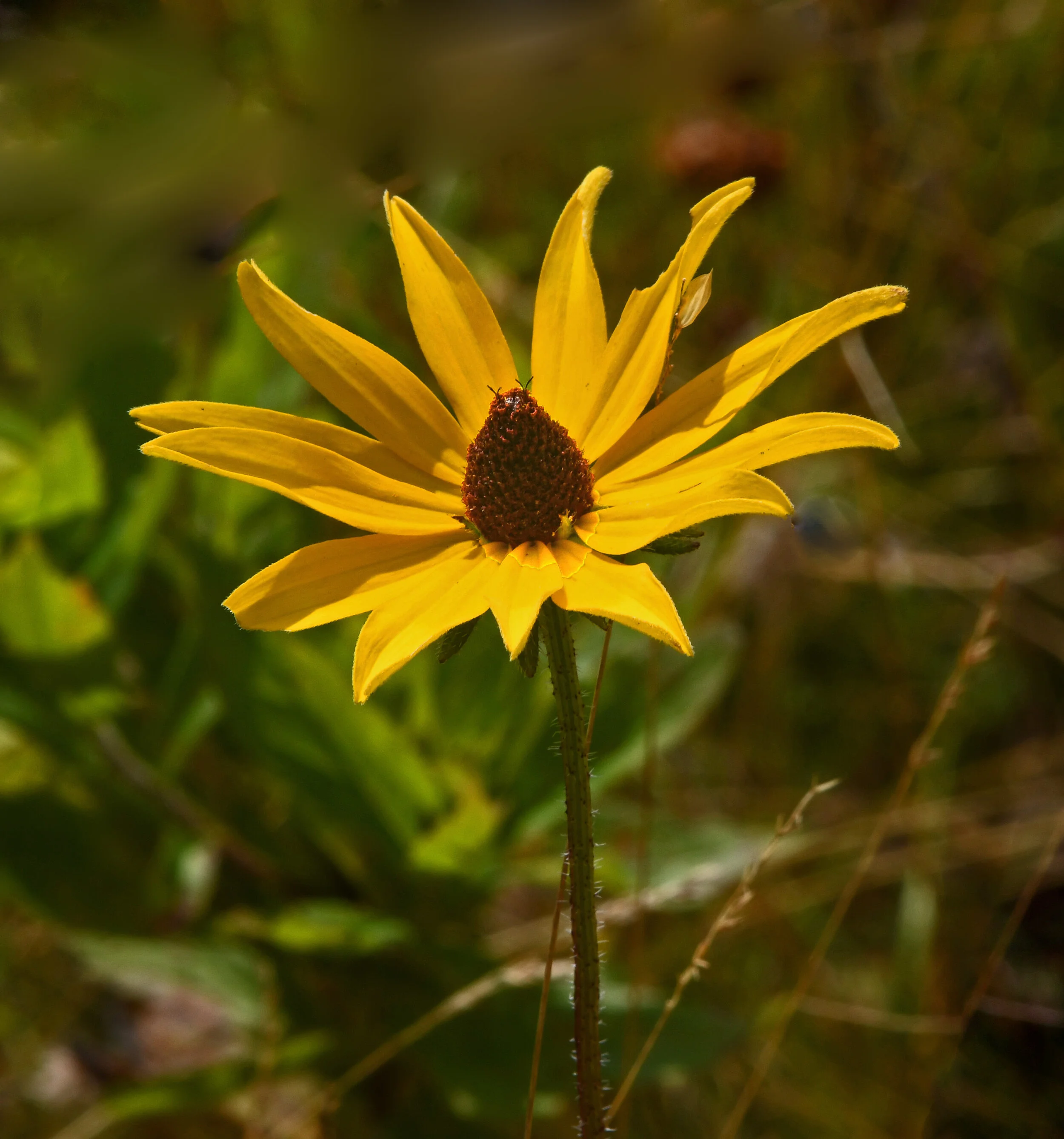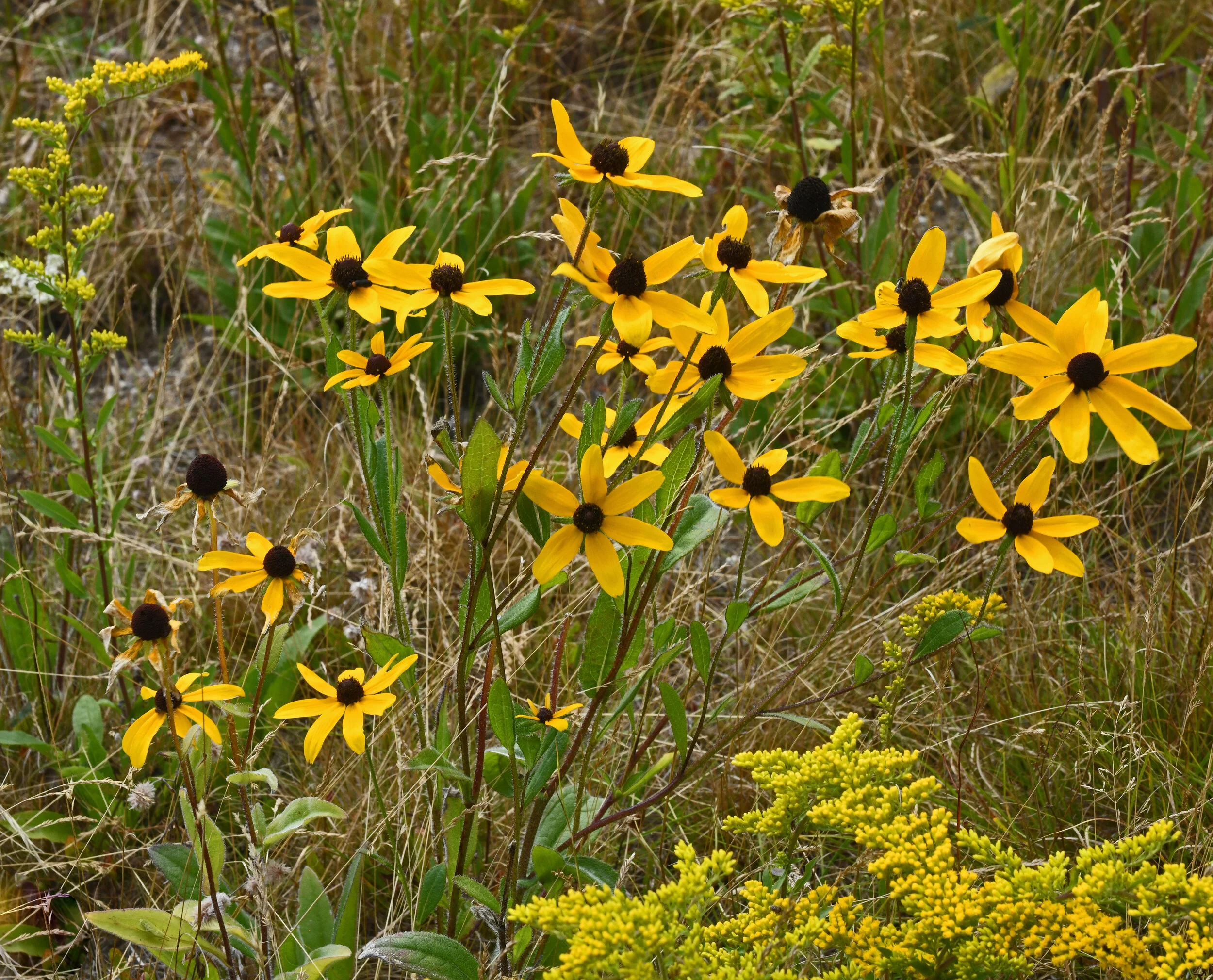Black-Eyed Susans are at their peak here, both the cultivated ones in the gardens and the wild ones in the fields. There are at least 30 species of Black-Eyed Susans, all native to North America and part of the Rudbeckia genus in the sunflower family. The cultivated ones shown here are R. fulgida var sullivantii (first two images taken August 18, last image taken yesterday):
The wild ones shown here is Rudbeckia hirta, we believe (Images taken yesterday):
Why call a flower Black-Eyed Susan when no one has black eyes (other than the punched variety)? The origin of the flower’s name reportedly is the ballad “Sweet William’s Farewell to Black-Eyed Susan.” It was written about 1720 by English poet John Gay, who apparently was not an ophthalmologist. It’s a farewell song to Susan, who probably had dark brown eyes, as do the beautiful flowers named after her. Perhaps we should consider these flowers as her farewell to summer. (Brooklin, Maine)




